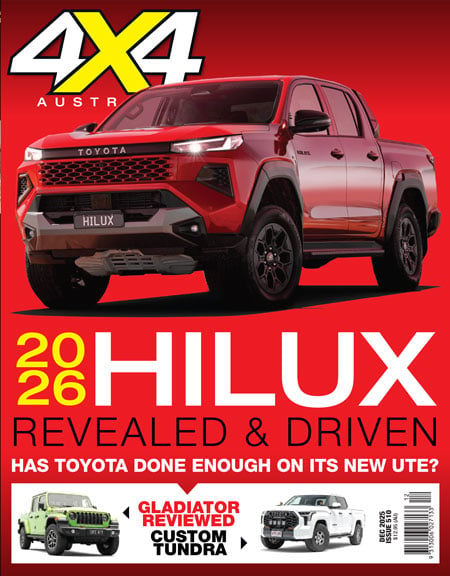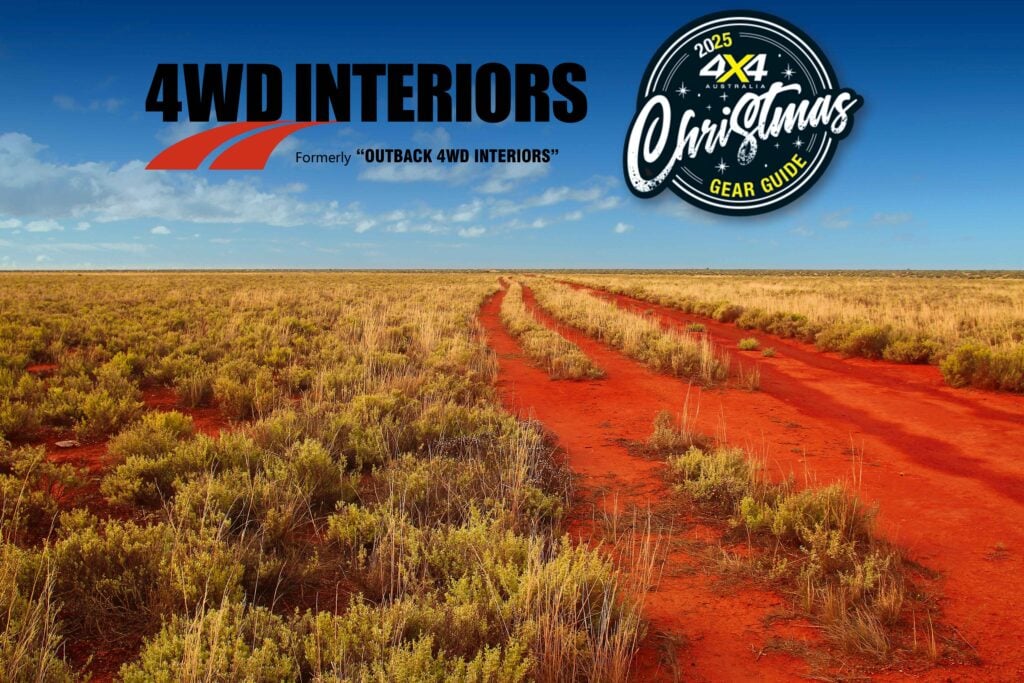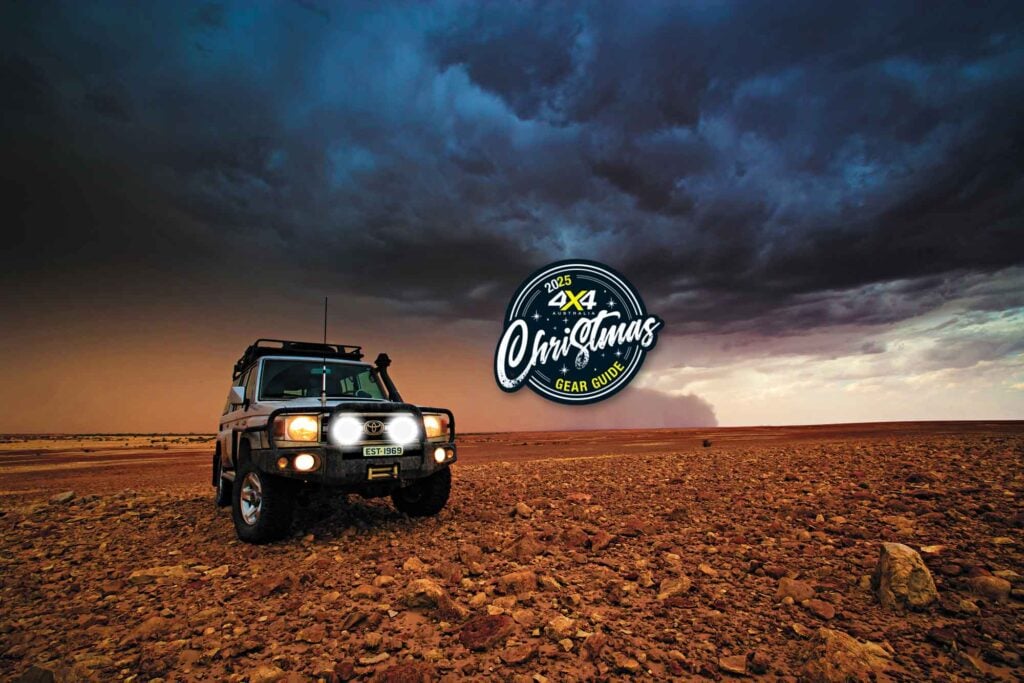When you start planning remote touring in Australia, one factor quickly rises above the rest: Range.
It doesn’t matter how capable your rig is, how trick your suspension set-up might be, or how well-stocked your fridge is. If you can’t carry enough fuel, you’re limited in how far you can push into the outback. That was the issue I faced with my Isuzu D-MAX. The factory fuel tank holds 76 litres – fine if you’re running around town or sticking to the highway between major centres. But when you’re tackling long runs between servos, or deliberately bypassing them to avoid eye-watering prices, 76 litres just doesn’t cut it.
That’s why I decided to fit a Brown Davis 145-litre replacement tank. It’s nearly double the standard capacity and has already proven its worth on long hauls and remote runs – including the challenging Canning Stock Route.
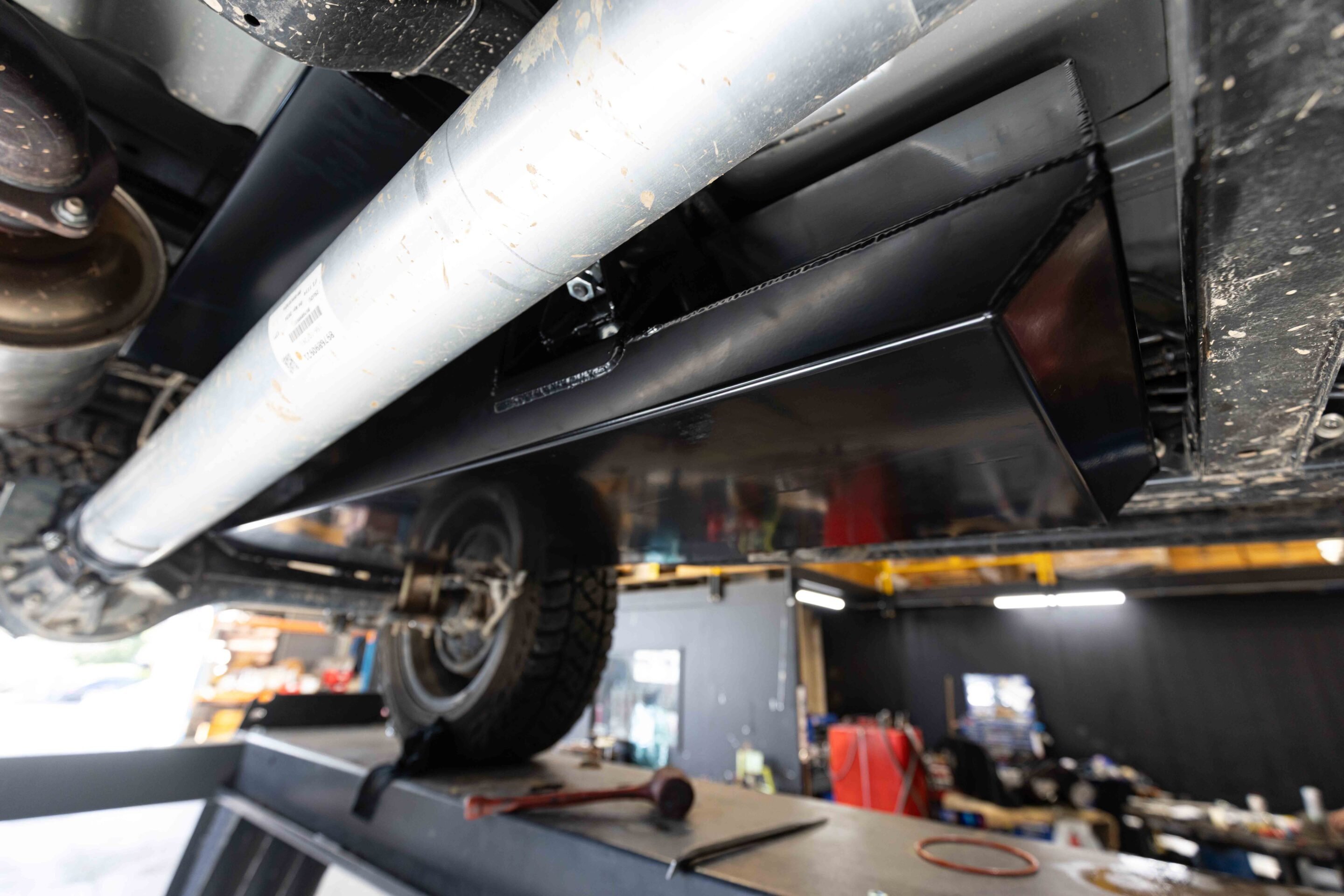
Bush-proven 4×4 fuel tanks
There are plenty of companies in the aftermarket game, but few with the heritage of Brown Davis.
Back in 1978, John Brown and David Davis began building custom fuel tanks for the motorsport world. These weren’t standard tanks – they were engineered to take the punishment of high-speed racing, where safety and performance go hand in hand. When a tank fails on the track, the consequences aren’t just inconvenient – they’re dangerous.
That engineering DNA carried over as the company expanded into four-wheel drive touring and commercial vehicles. What began as a solution for race cars soon became a lifeline for outback travellers. Today, Brown Davis is still proudly Australian-owned and based in Bayswater on Melbourne’s eastern fringe. The company designs and manufactures its tanks locally, tailoring them to the conditions we face on our tracks.
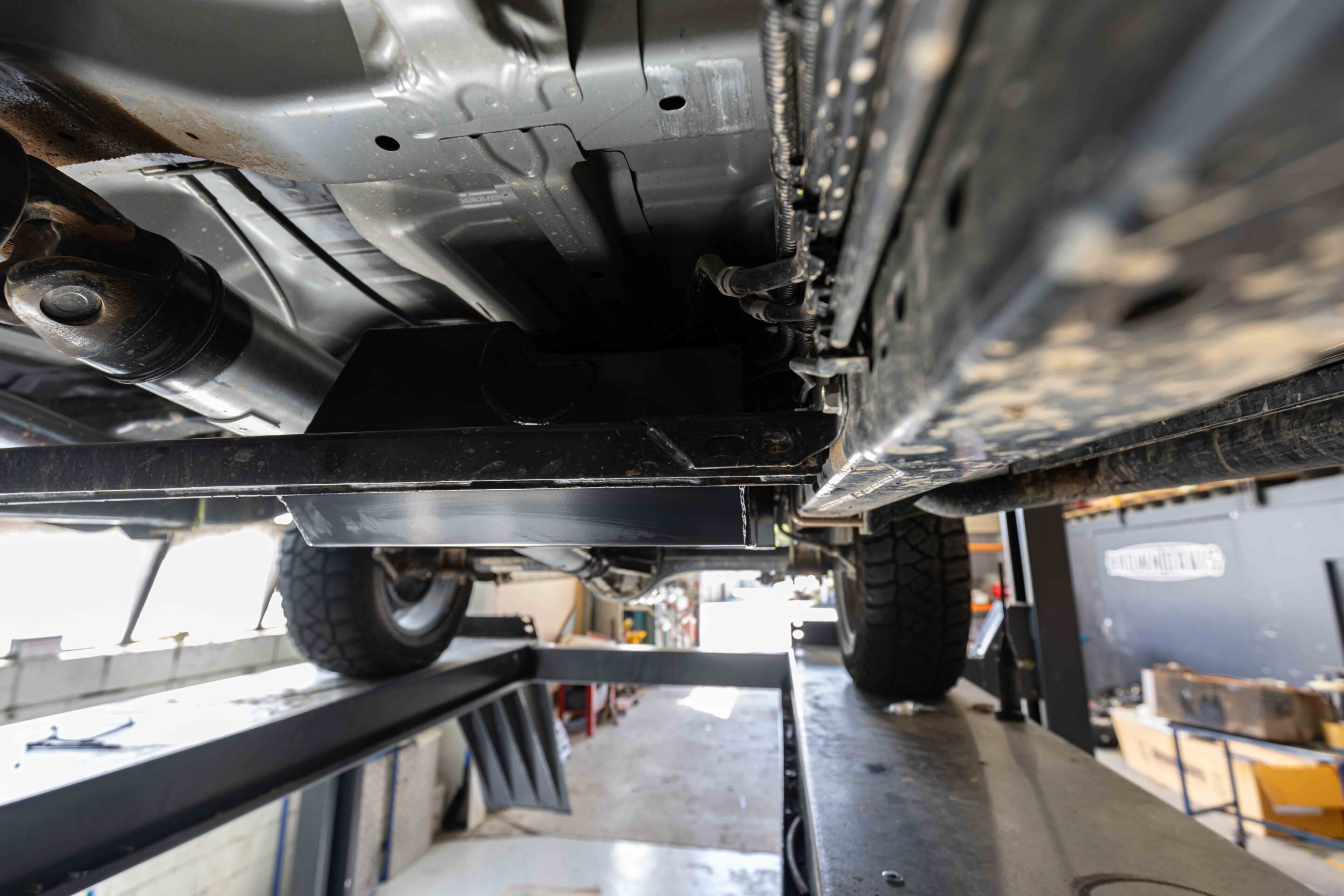
The product range is impressive. Beyond the D-MAX, Brown Davis builds long-range and replacement tanks for many nameplates including LandCruiser, HiLux, Ranger, Navara, Patros, BT-50, Prado and more. The company has also expanded into auxiliary tanks, bash plates, underbody protection and even vehicle accessories for mining and fleet operators.
That’s the key point – Brown Davis isn’t just making tanks for weekend warriors. Its gear is trusted by commercial fleets, government departments and emergency services, which says a lot about the confidence its products inspire.
Tough steel construction
Part of what makes the Brown Davis replacement tank stand out is its construction.
Each tank is made from cold-rolled 2mm aluminised steel, with a powder-coated exterior for extra durability. Inside, the design ensures fuel is delivered reliably, even in the toughest conditions. A swirl pot ensures consistent pickup even when fuel is sloshing around over rough terrain or running low. Internal baffles reduce surge and add strength to the tank. The Brown Davis tank also includes a drain bung, making it easy to empty or clean when required.
On the weight front, here’s how things compare on a dual-cab ute (excluding fuel). The steel tank is heavier, but the added durability and features more than justify the extra kilos:
- Factory tank: 20-25kg
- Poly tank: 25-28kg
- Brown Davis steel tank: 45-50kg
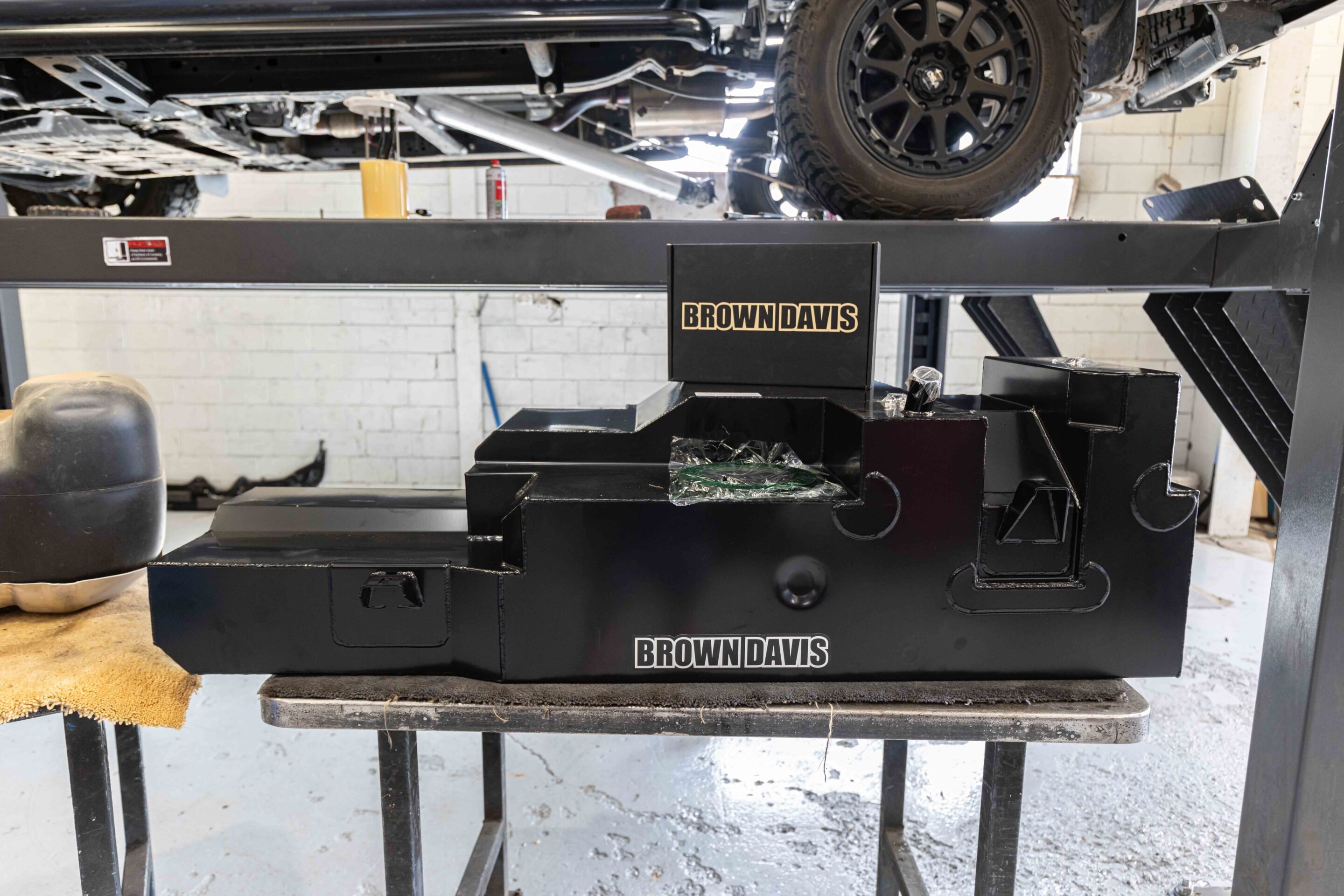
Another neat touch is that the factory fuel sender relocates directly into the Brown Davis tank. On some models a modified or replacement float arm is needed, but the system is designed so the vehicle’s fuel gauge works as accurately as possible without rewiring the vehicle. Brown Davis also recommends resetting the odometer each time you fill up – after a couple of tanks, you’ll know exactly what range to expect.
Every tank is stamped with a serial number, allowing Brown Davis to track when it was made and who it was sold to. That level of accountability is reassuring when you’re investing serious money in a major touring upgrade.
Why upgrade your fuel tank?
When it came time to sort my fuel range, I only had one option with a tub on the D-MAX – swap the factory tank for a larger replacement.
I like the simplicity of a straight replacement: one filler, no extra switches or pumps, and no messing about transferring fuel between tanks. The Brown Davis replacement for the D-MAX was the obvious choice – strong, simple and proven. Jumping from 76 litres to 145 litres gave me the ability to travel further – but the real-world benefits go well beyond just extra kilometres.
Real benefits of the upgrade
- Freedom from expensive roadhouses: Out in the bush, fuel prices can hit $3 per litre or more. With the extra capacity, I can plan refuels around cheaper stops rather than being forced to top up at the only bowser for hundreds of kilometres.
- Less need for jerry cans: I don’t like carrying more than one jerry can if I can help it. They take up space, add weight in awkward spots and are never as safe or convenient as fuel stored in a proper tank. With 145 litres onboard, I only need a spare jerry as an absolute worst-case backup.
- Peace of mind in the remote stuff: On tracks like the Canning Stock Route, fuel range isn’t negotiable. Having the bigger tank meant I could travel without constantly second-guessing how far the next stop was.
- No compromise to clearance: The tank tucks neatly beside the chassis with minimal overhang. Even crossing dunes, I never felt clearance was compromised.
- Simple filling: The tank uses the existing filler neck. There’s no extra cap, no second hose, no confusing plumbing – just fill as normal.
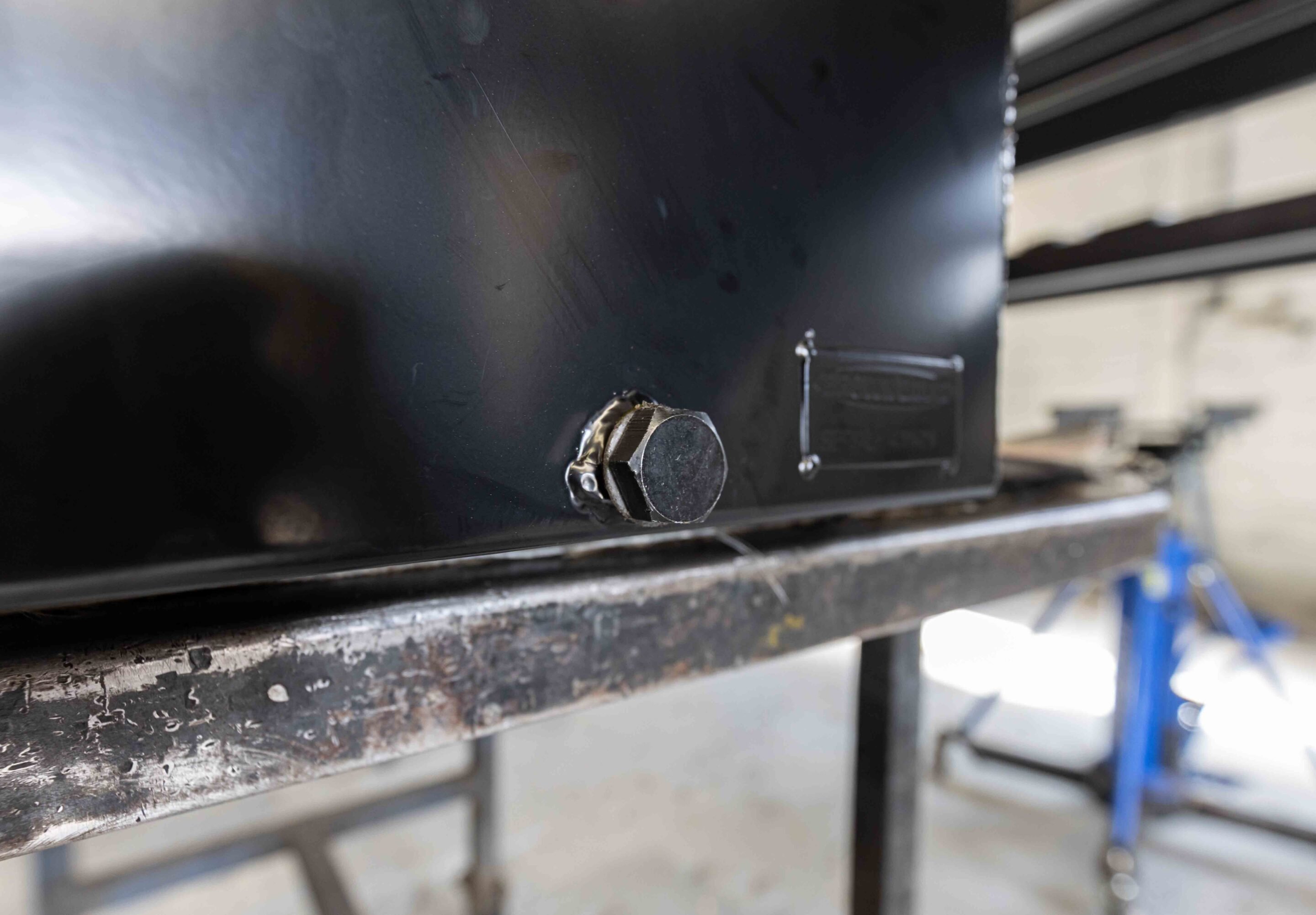
Installation guide
One of the key questions when choosing a replacement tank is how complex the installation will be. While Brown Davis designs its tanks as direct replacements for the factory unit, this isn’t a simple bolt-in job you can knock over in the driveway on a Saturday morning.
The process involves safely draining and removing the original tank, relocating the factory fuel sender into the new unit, connecting all fuel and breather lines, and securing the replacement with the supplied brackets. In some cases the float arm on the sender unit needs to be modified or swapped for an alternative supplied by Brown Davis to ensure the gauge reads as accurately as possible. Once installed, the system doesn’t require any wiring changes, as it uses all the factory connections.
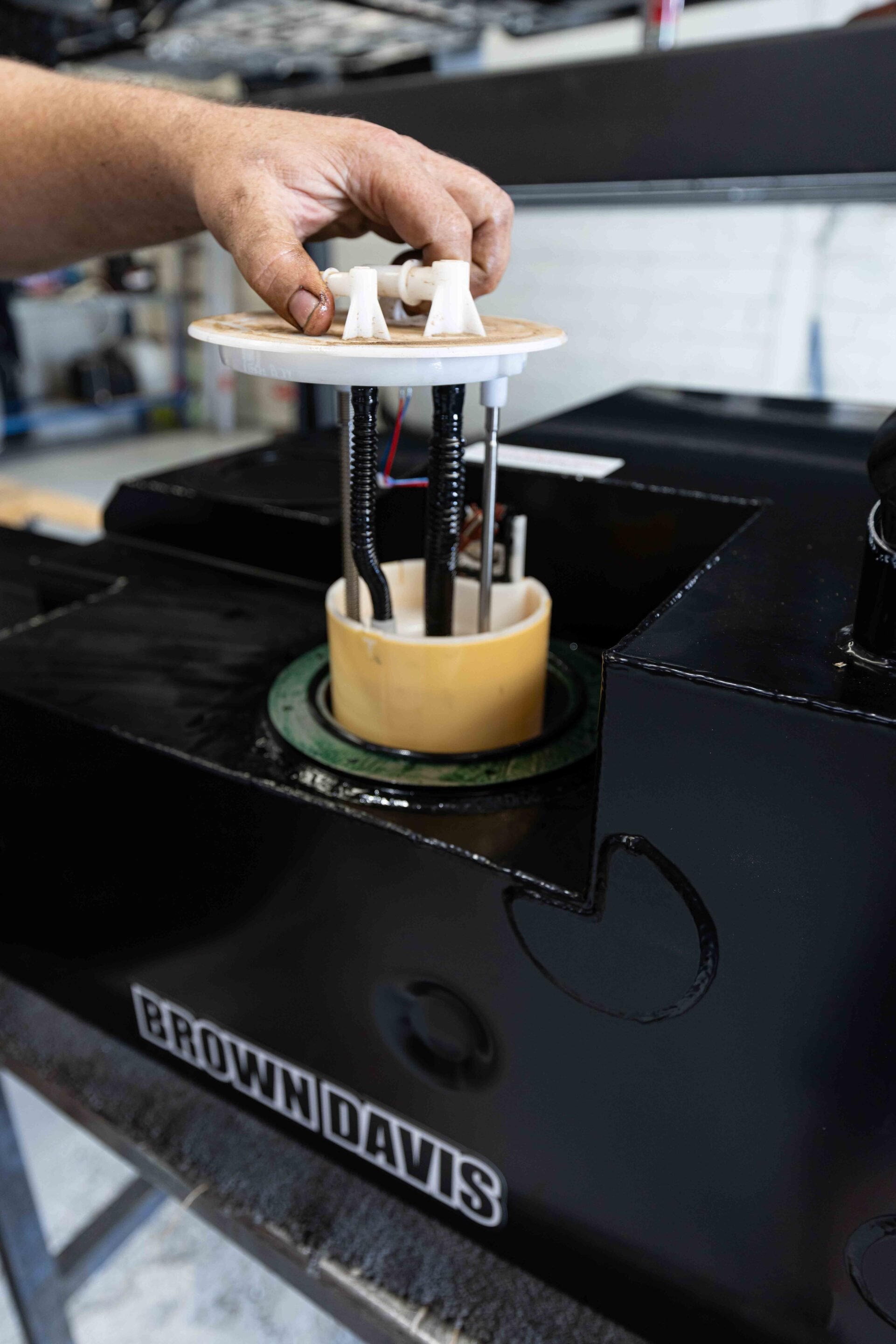
I had my tank fitted by Brown Davis at its Bayswater facility in Melbourne. The company also has a wide network of authorised installers across Australia, including 4×4 workshops and mechanical specialists. These shops are experienced with fuel systems and can get the job done cleanly and safely.
Can you fit it yourself? Technically, yes – if you’ve got the gear, the know-how and the confidence to work around fuel lines. But for most people, it’s best left to the professionals. Not only will you avoid the hassle of muscling a steel tank into place under a ute on jack stands, but you’ll also have the peace of mind that the job’s done correctly, safely and in line with warranty requirements.
For me, it was money well spent. The whole process took only a couple of hours, and I drove away with the peace of mind that everything was fitted correctly, leak-free and ready for the long haul.
Life on the track
Of course, no modification is perfect. There are a couple of quirks to be aware of if you’re considering this upgrade.
The biggest issue is that the factory distance-to-empty (DTE) function no longer works properly. With the larger tank, the ECU simply isn’t calibrated to measure it correctly. The same goes for the average fuel-use display – it’s not accurate.
On the Canning, I noticed the fuel needle dropping much quicker than expected. That set off alarm bells – the last thing you want is to be caught short out there. But when I worked out my usage on paper, it all checked out. I was averaging 18.4L/100km across the dunes, around 50 per cent more than my usual highway consumption. That might seem heavy, but it’s exactly what you’d expect in that environment.
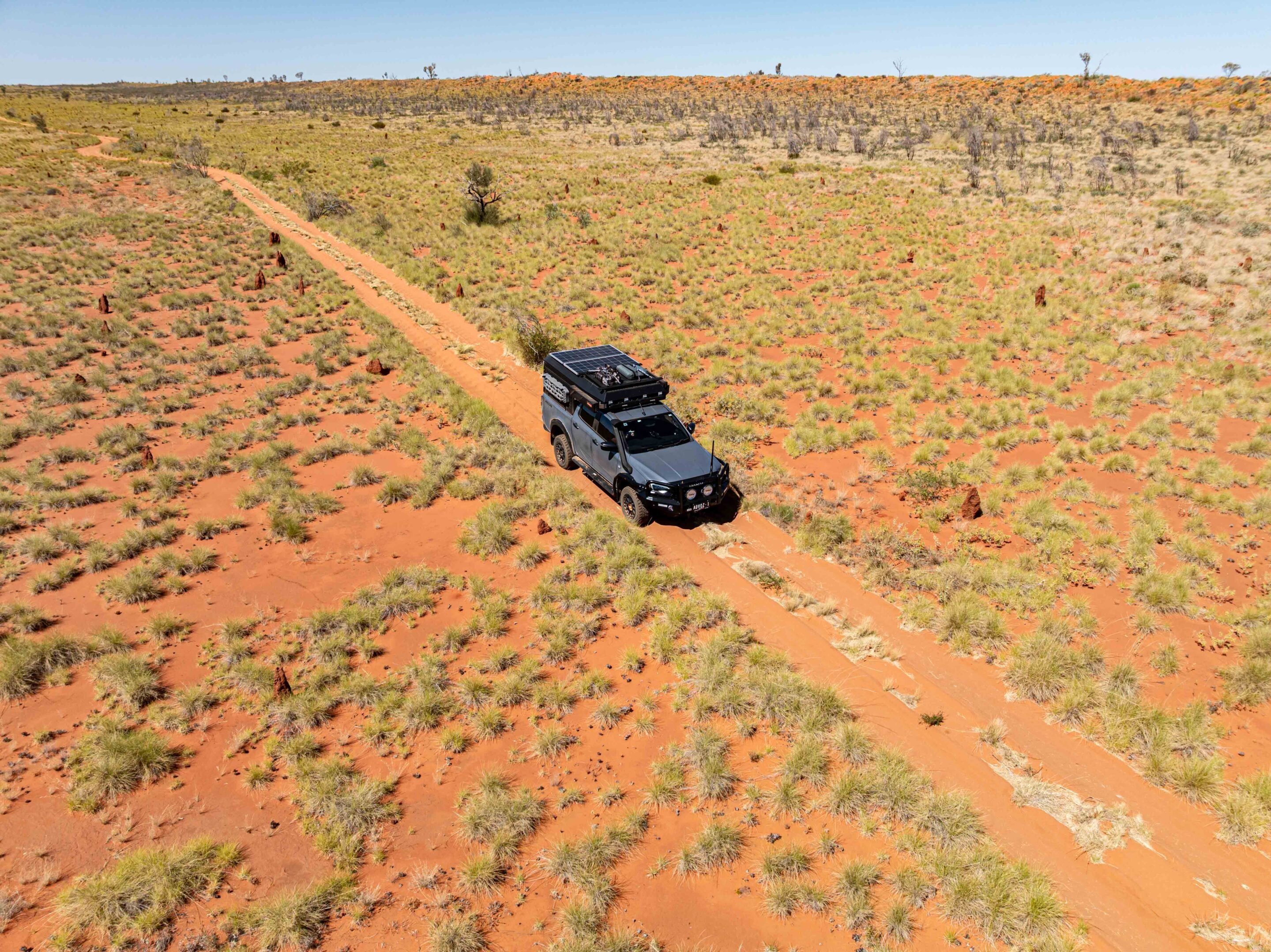
The other quirk is that when the low-fuel light comes on, there’s still 30–40 litres left in the tank. That’s a huge buffer, but it does take some mental adjustment. The temptation is to pull in and refill as soon as the light flicks on – but in reality, you’ve still got a long way to go.
So instead of relying on the dash, I go old-school – calculating consumption based on kilometres travelled and litres refilled. It’s a habit you pick up quickly, and in a way it reconnects you with the vehicle in a way digital displays never could.
Performance on remote tracks
The Canning Stock Route was the ultimate test. Over nearly two weeks on the track I had to manage fuel carefully, knowing roadhouses and wells were few and far between.
The tank performed flawlessly. Despite heavy sand driving and carrying big loads, I still had plenty of fuel in reserve when I reached Kunawarritji – 730km from the last fuel stop at Billiluna. The peace of mind that comes with extra capacity can’t be overstated, especially when you’re travelling solo. Even better, the tank didn’t cause any clearance dramas. I was expecting at least a scrape or two over the dune crests, but the fitment proved tight and well thought out. No reduced departure angle, no nasty surprises.
On the highway runs before and after, the tank let me skip expensive fills at roadhouses and refuel where prices were lower. On one run I drove past three outback servos without stopping – simply because I didn’t need to. That kind of freedom changes the way you plan your trips.
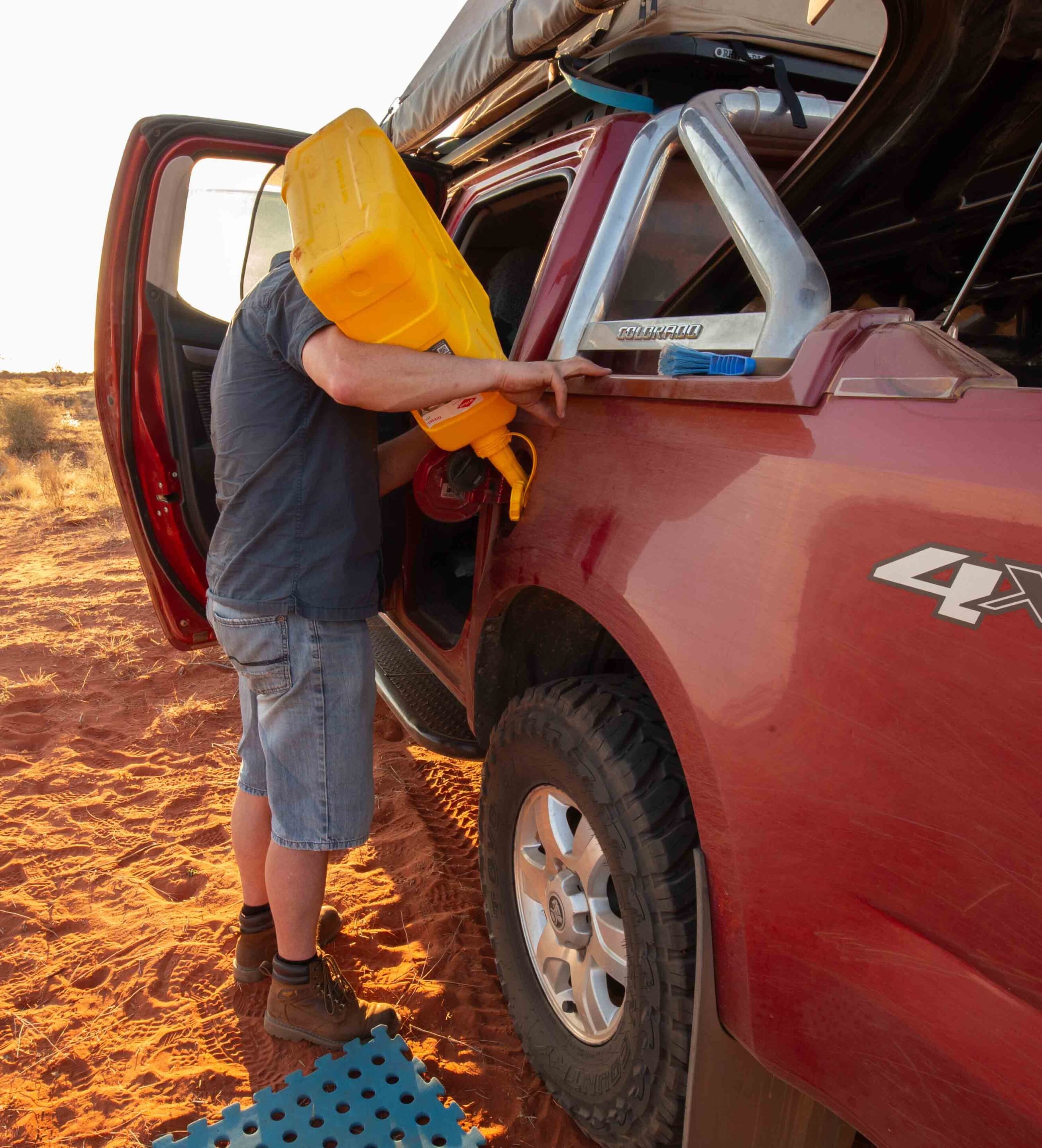
Verdict
The Brown Davis 145-litre replacement tank has been one of the best upgrades I’ve made to the D-MAX. It hasn’t just added kilometres to my range – it’s added confidence to my travels.
When you’re remote, the last thing you want is range anxiety. Knowing you’ve got that extra buffer changes everything. Whether it’s skipping a $3 bowser, tackling long tracks or simply carrying less external fuel, the Brown Davis tank has proven its worth time and again.
Yes, you lose a few digital conveniences, but that’s a small trade-off for the benefits. If you’re serious about touring in Australia, a long-range replacement tank is one of the smartest investments you can make. And with Brown Davis’ racing heritage and proven reliability, it’s hard to look past its gear.
Pros
- Almost double the range of the factory tank
- Avoid overpriced fuel stops
- Less need for jerry cans
- Strong construction
- Cold-rolled steel, swirl pot, baffles and a drain bung for reliability
- Simple filling – uses factory filler neck
- No clearance issues, even in dunes
- Serial-numbered for traceability
Cons
- Distance-to-empty no longer works
- Average fuel-use display is inaccurate
- Heavier than factory or poly tanks
- Takes time to recalibrate to the new reserve margin



